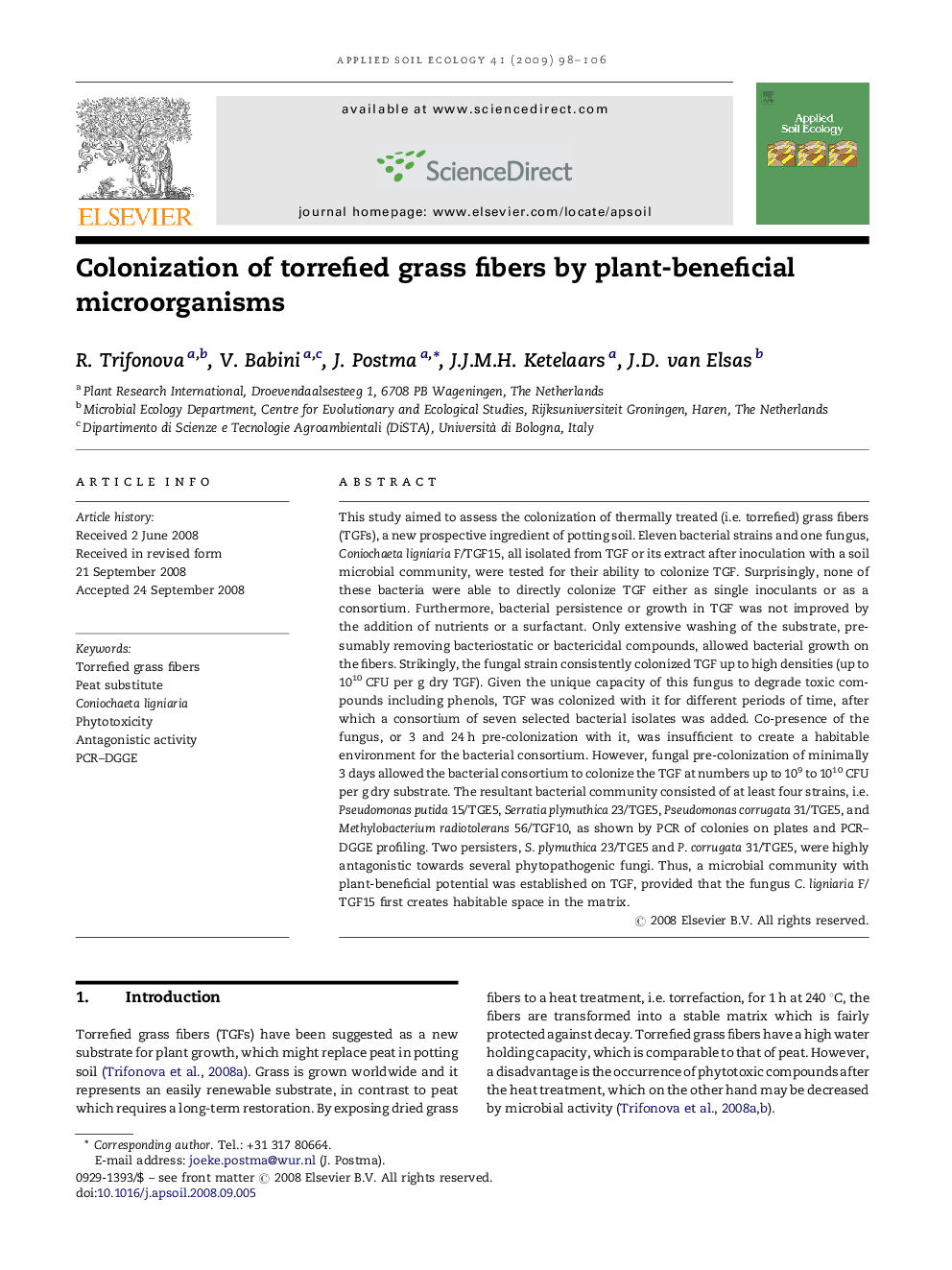| کد مقاله | کد نشریه | سال انتشار | مقاله انگلیسی | نسخه تمام متن |
|---|---|---|---|---|
| 4383100 | 1304248 | 2009 | 9 صفحه PDF | دانلود رایگان |

This study aimed to assess the colonization of thermally treated (i.e. torrefied) grass fibers (TGFs), a new prospective ingredient of potting soil. Eleven bacterial strains and one fungus, Coniochaeta ligniaria F/TGF15, all isolated from TGF or its extract after inoculation with a soil microbial community, were tested for their ability to colonize TGF. Surprisingly, none of these bacteria were able to directly colonize TGF either as single inoculants or as a consortium. Furthermore, bacterial persistence or growth in TGF was not improved by the addition of nutrients or a surfactant. Only extensive washing of the substrate, presumably removing bacteriostatic or bactericidal compounds, allowed bacterial growth on the fibers. Strikingly, the fungal strain consistently colonized TGF up to high densities (up to 1010 CFU per g dry TGF). Given the unique capacity of this fungus to degrade toxic compounds including phenols, TGF was colonized with it for different periods of time, after which a consortium of seven selected bacterial isolates was added. Co-presence of the fungus, or 3 and 24 h pre-colonization with it, was insufficient to create a habitable environment for the bacterial consortium. However, fungal pre-colonization of minimally 3 days allowed the bacterial consortium to colonize the TGF at numbers up to 109 to 1010 CFU per g dry substrate. The resultant bacterial community consisted of at least four strains, i.e. Pseudomonas putida 15/TGE5, Serratia plymuthica 23/TGE5, Pseudomonas corrugata 31/TGE5, and Methylobacterium radiotolerans 56/TGF10, as shown by PCR of colonies on plates and PCR–DGGE profiling. Two persisters, S. plymuthica 23/TGE5 and P. corrugata 31/TGE5, were highly antagonistic towards several phytopathogenic fungi. Thus, a microbial community with plant-beneficial potential was established on TGF, provided that the fungus C. ligniaria F/TGF15 first creates habitable space in the matrix.
Journal: Applied Soil Ecology - Volume 41, Issue 1, January 2009, Pages 98–106